The largest urban renewal since South Bank is firmly underway with the Gabba Stadium Project Validation Report (PVR) complete, community consultation on the urban renewal started and a new name on the table.
Deputy Premier Steven Miles is asking the community what they think of “East Bank”, as the new name for the broader Woolloongabba urban renewal precinct, which covers much of the suburb.
“The Gabba’s 128-year history makes it iconic for Queensland, this redevelopment will ensure a lasting legacy to be enjoyed for another 128 years and beyond.
“This isn’t just about a stadium upgrade. This is about anchoring an urban renewal project that will see Woolloongabba transformed like South Bank was transformed for Expo 88. Deputy Premier Steven Miles said.
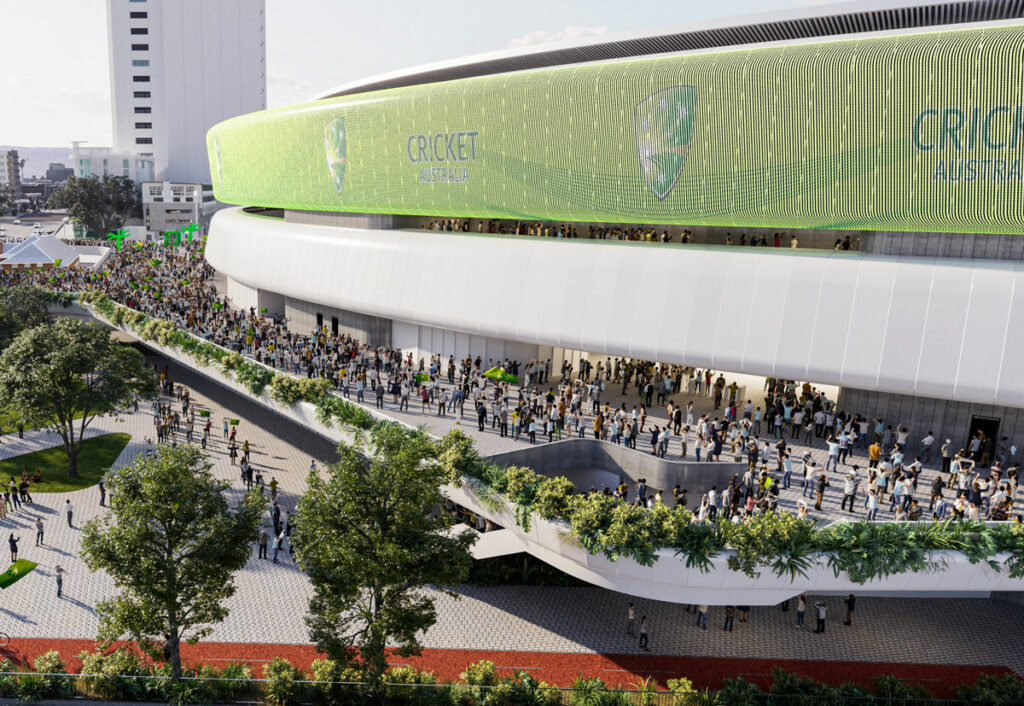
The vision for the Precinct is to be a vibrant place on event and non-event days that is better connected and more sustainable and supports more open space, proving a lasting legacy for residents.
The broader precinct provides the opportunity for urban renewal of a world-renowned location for the enjoyment of local residents and those who visit for work or fun.
It will deliver a great mix of uses, from commercial and retail opportunities to hotel and residential options, including at least 20 percent social and affordable housing.
According to the state Government, the full $2.7 billion stadium rebuild will support this vision, as well as providing an optimal fan experience and achieve international best practice.
The PVR provides detail on how The Gabba stadium will be fully deconstructed and rebuilt to support Queensland’s long-term sport, community, and entertainment needs before and for decades after Brisbane 2032.
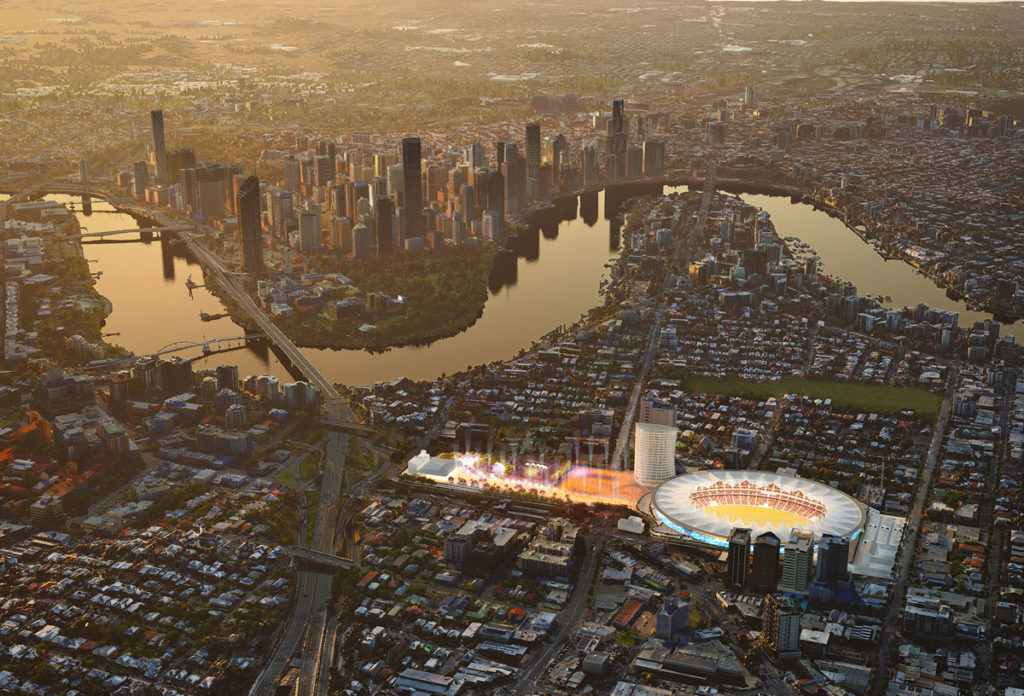
Deputy premier Steven Miles said that the Woolloongabba redevelopment, along with Cross River Rail and the Brisbane Metro, will anchor a major redevelopment of Woolloongabba to maximise the benefit of public investment and deliver more housing including social and affordable housing, more jobs, and better connectivity.
“We could see another 880 or more apartments delivered in the precinct alone, as well as retail and dining.
“Plus, with at least 50 percent of the precinct set to be open space and a Walkable Spine from the Gabba to Roma Street via South Bank, there will be more for locals and visitors to enjoy.
“We’re going for the best bang-for-buck and giving Queenslanders a new, modern stadium with all the finishes, because it is the best value for money, and it will deliver much more than a stadium.
“Having a modern, safe, accessible, and globally recognisable stadium will help draw more national and international events, and we know one concert can produce up to $5 million in visitor spending in our economy.
“The upgrade will create an estimated 2,300 jobs during the peak of construction in 2028, the economic impact will flow throughout the state.”
In 2018, before the successful bid for the Brisbane 2032 Olympic and Paralympic Games, the Stadium Taskforce Report found that The Gabba is a ‘tired’ venue and that it would come to the end of its useful life by 2030, indicating a rebuilt Gabba should be considered irrespective of the Games.
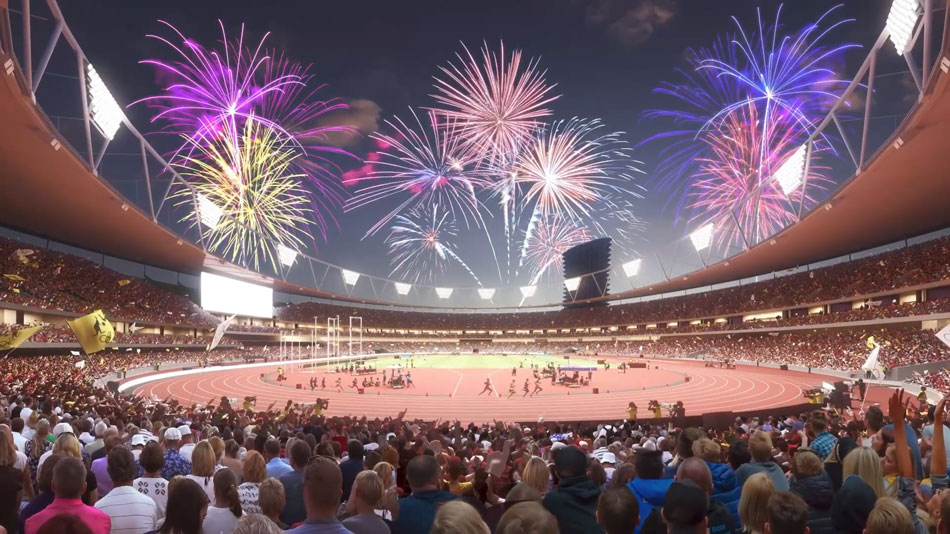
Steven Miles explained, of the four options considered in the PVR, the one selected not only provides the best value for money, but also hits the mark on all four key pillars, including being a catalyst for sustainable urban renewal, investment and ability to attract and host world-class events.
The rebuild sits within the Woolloongabba Priority Development Area (PDA), that will see the rebuilt Gabba Stadium, Cross River Rail and the Brisbane Metro connect to South Bank, the Brisbane CBD and new Brisbane Arena at Roma St via a walkable spine, an active travel corridor to South Bank plus Brisbane City Council’s new green bridge.
Preparation of a Development Scheme for the new Woolloongabba (PDA) is underway and will establish the long-term planning rules for the precinct.
The community are invited to take part in a community survey about the PDA and give feedback on the idea of a new name, including alternatives on Economic Development Queensland’s community consultation page.
More information on the Gabba Stadium PVR can be found here. Procurement processes for the Gabba stadium rebuild are commencing with industry briefings underway in December. The design process will occur in 2024.
Deconstruction will commence in 2025, with the new stadium to be ready for use in 2030, well ahead of Brisbane 2032.
The new Gabba stadium will have:
- better viewing through an enhanced design to provide a 360-degree fan experience
- larger entries and concourses for better admission
- better connectivity and accessibility throughout, including lifts and escalators
- two pedestrian bridges across Main Street to form the ‘station to stadium’ connection between the stadium and the Cross River Rail station, as well as a pedestrian bridge over Stanley Street
- improved, appropriate and accessible athlete, team and official changerooms
- team facilities with direct access to pitches and practice wickets
- 50,000 seats (potential for greater than 50,000 seats in legacy mode depending on the sport and between 50,000 and more than 70,000 pax for concerts, depending on placement of stage and standing or seated, among other factors)
- cutting edge technology and lighting
- an internal service ring road to improve movement during events
- improved administration, operations and event day facilities that will boost efficiency
- a range of new premium products including dining options, members spaces, and food and beverage outlets
- retail offerings inside including merchandise stores, and retail opportunities on the streets outside the stadium
- international media facilities
- sustainability aspects like targeting a 6 Star Green Star rating, sustainable energy and water consumption within the stadium
- seamless connection to the broader precinct, currently being master planned to create a new mixed-use precinct with increased greenspace, retail and dining.
Woolloongabba Priority Development Area (PDA):
- On 22 September 2023, a new 106-hectare Woolloongabba PDA was declared, and an Interim Land Use Plan (ILUP) was given effect.
- The new, larger Woolloongabba PDA encompasses the northern areas of Woolloongabba and the Stanley Street precinct.
- The Interim Land Use Plan will be in effect for 12 months, providing an interim planning and development framework for the Woolloongabba PDA whilst detailed planning and community engagement is completed as part of the development scheme preparation process.
- The Interim Land Use Plan carries through the government’s commitment for 50 per cent open space within the boundary of the former Woolloongabba Cross River Rail PDA.
- Additionally, the Interim Land Use Plan includes a 20 percent requirement for high quality social or affordable housing, including affordable housing for frontline workers within the former Woolloongabba Cross River Rail PDA, in line with the government’s commitment.


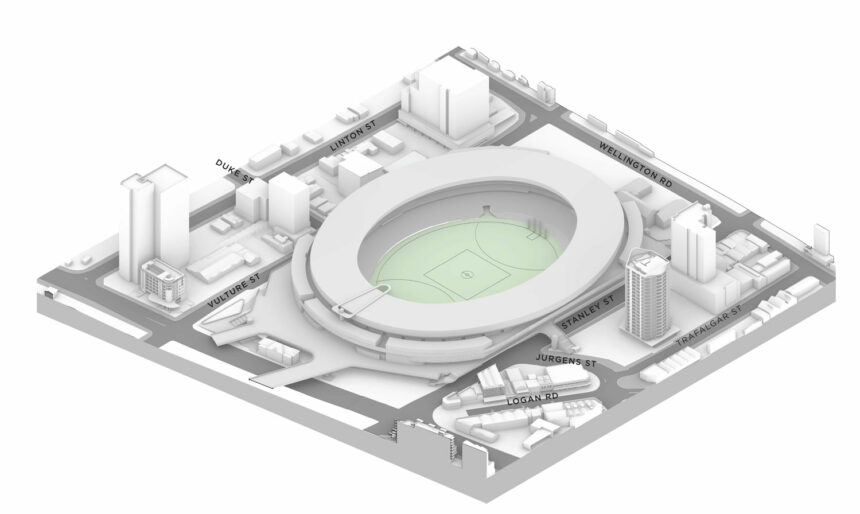
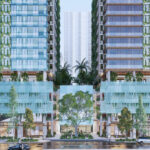
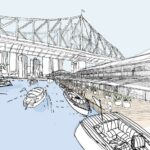
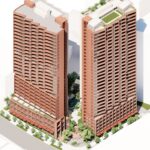




You can imagine a dingy back-office meeting room where an over-worked marketing department are furiously brainstorming a new catch-phrase for their state-government overlords.
“We need to tie the scale of works to other successful government ventures, like South Bank.”
“We can’t use the word Woolloongabba; that name just doesn’t poll well with international investors.”
“We can’t have too exciting a marketing brand; we must stick with the design-by-committee approach.”
“I’ve got it! how about we go with a branding that’s no-one’s first choice but everyone is begrudgingly willing to concede.”
I’m looking forward to the whole marketing scheme falling over and we go back to just naming it ‘the Gabba precinct.’
Why does the Queensland Gov have cultural cringe about the State’s stadium. Why would East Bank Precinct be a better name than the Gabba Precint. Why does Lang Park have to be called Brisbane Stadium when the sponsors name can’t be used?